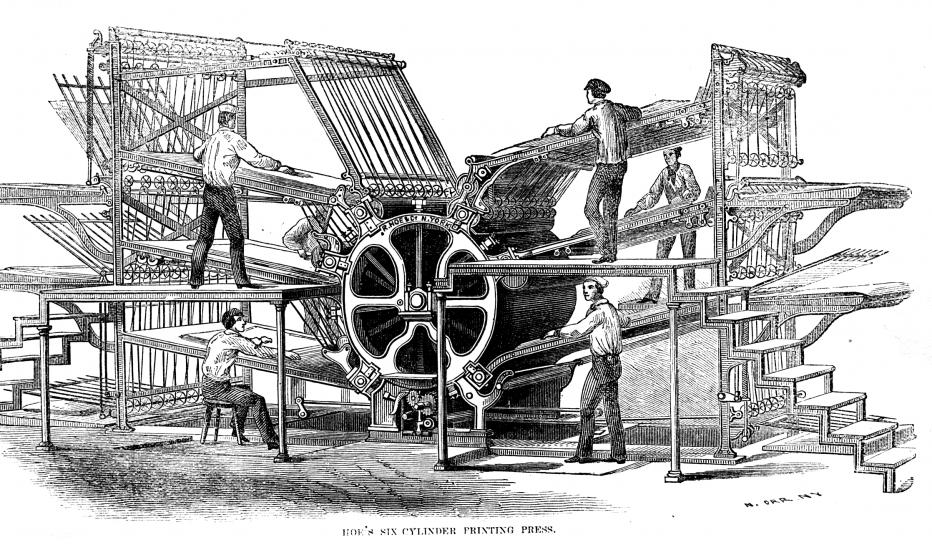History of printing

The history of printing is long and fascinating, reaching back through the ages as one of the oldest forms of communication and expression.
When was printing invented?
Printing jobs can be traced back to the 2nd century AD China. It's almost unfathomable what the world was like back then - certainly no Facebook, at least.
In 175 AD, the emperor of China had the six main classics of Confucianism carved into stone so an authentic version would forever remain in the world. The emperor wasn't the only one who wanted to preserve the works, the Confucian scholars themselves wanted a copy. They laid sheets of paper over the slabs and used charcoal to make a rubbing.
It was a natural step for Buddhists in Korea and Japan in 750-768 AD to carve raised letters, apply ink to the letters and place paper over top to get a copy. This was the first ever recorded white on black printing. The earliest printed document is thought to be a single sutra in Korea.
Following this, Japan caught on to the excitement and tried mass circulation. In Nara, 768 AD, the empress commissioned an edition of a lucky prayer to be printed a million times. This massive undertaking took six years to complete and many still exist today.
When was the first book printed?
It took another 100 years for the first book to be printed. In 868 AD at the end of the T'ang dynasty in China, a scroll was printed with the Diamond Sutra written across nearly five metres of pages that were stuck together at the edges.
The first page holds another first - the very first ever printed illustration. In the picture, a glorious Buddha sits on a throne and is surrounded by devotees - even thousands of years ago they had picture books. It is believed that this figure, known as Wang Chieh, is the one who paid for the distribution of the holy book.
This book started another tradition - adding the details of publication. At the end of the document, there are the words "Printed on 11 May 868 by Wang Chieh, for free general distribution, in order in deep reverence to perpetuate the memory of his parents." Who knew, all of those authors who dedicate their autobiography or novel to their loved ones are following the lead of good old Wang. This printed text has proved to be a strong starting point in the world of printing.
A rogue explorer discovered the book in a cave at Dunhuang in 1899. The discovery was instantly incredibly exciting, as the date was clearly printed on the document, and it told of the details of life during the time it was written.
How did printing work back then?
The Diamond Sutra was printed using the wood block technique, which is a time-consuming and intensive process. Pieces of wood are carved away to achieve the printing pattern. The areas on the page that are to stay white are cut away and paper is laid over the inked block to create a print. In order to get a good copy, the paper had to be firmly and evenly pushed down. When colour was introduced, multiple blocks had to be used.
It wasn't a perfect system, but it did the job, and those who were skilled at using the technique could produce top quality prints. Chinese printers became very good with these techniques, and the Diamond Sutra is a wonderful display of their work.
Print Together - printing service in Melbourne